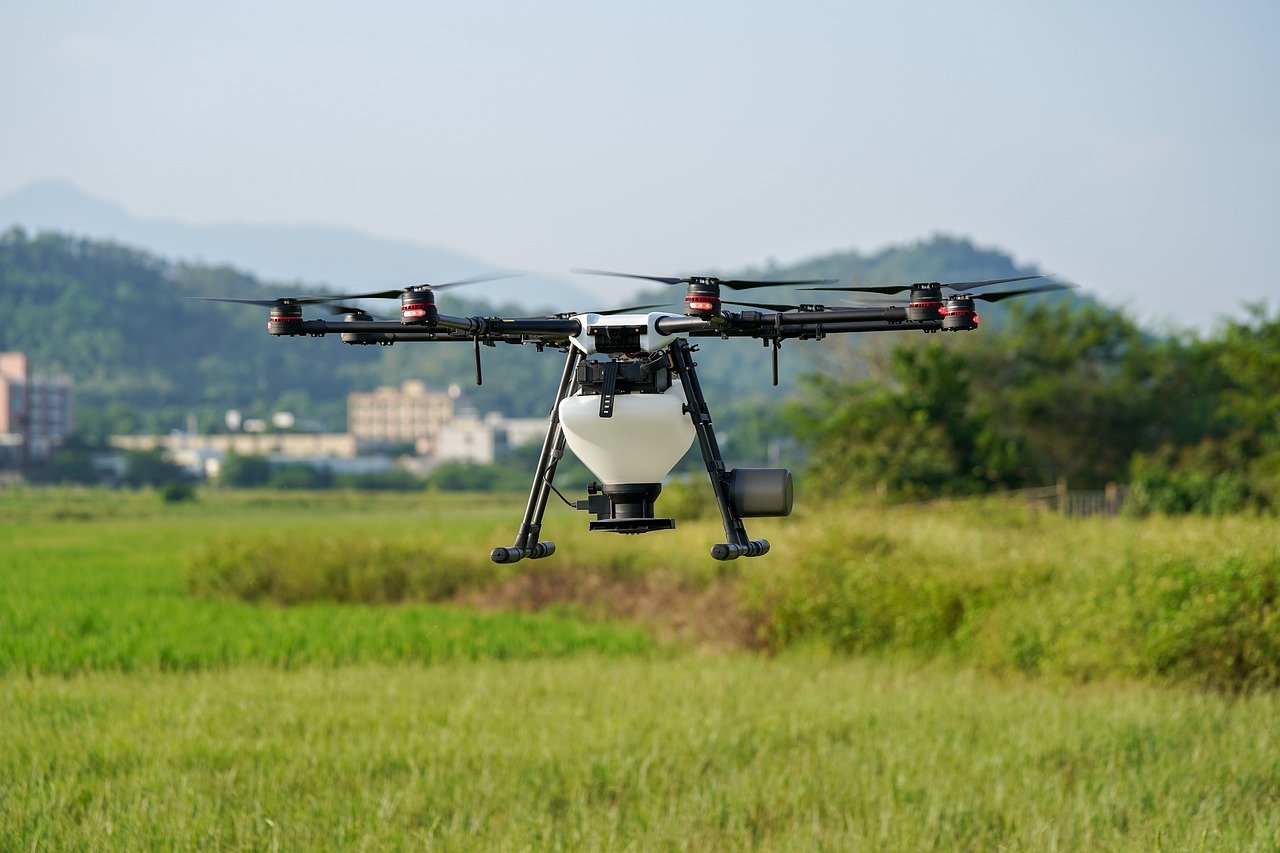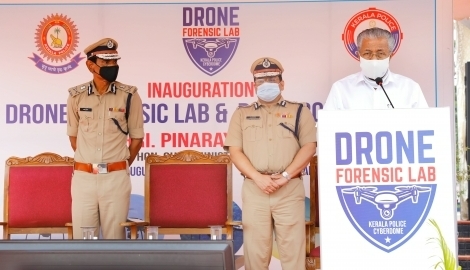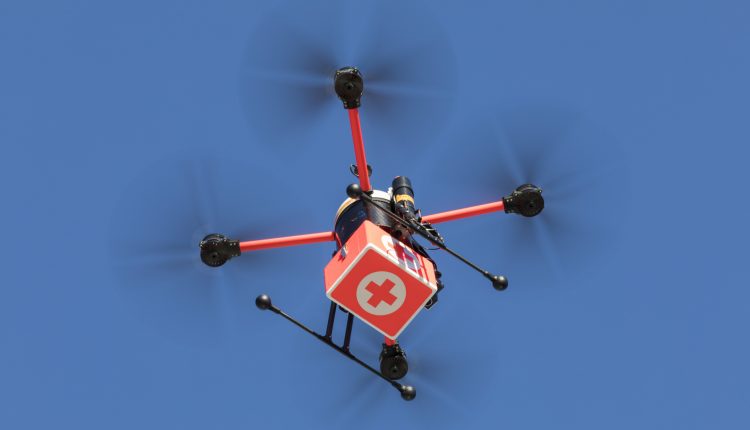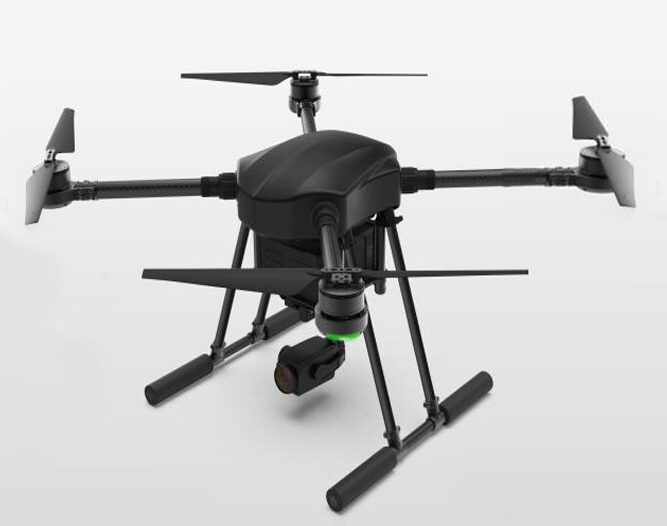The booming drone industry in India
In the past few years, drones have become a major part of our lives. They are being used for different purposes and in industries across the world. One industry that is benefiting from these small flying machines is India’s booming drone market which has been growing at a phenomenal rate since 2015. The drone industry in India has seen tremendous growth over the past few years and it doesn’t seem to be slowing down anytime soon!
Drone manufacturing in India
India has become one of the largest exporters of drones. Not only are they competing with China and other countries, but India is also a leading manufacturer in this sector as well! In fact, it was just recently announced that there will be at least 600 drone manufacturers by 2020 which would account for almost half of all global capacity. This boom began when the government set up some window clearance processes to get approvals for setting up units across India. The fast-track policy came into effect with covid effect from 2020 onwards and these small flying machines have been taking off ever since then!
For those looking to invest in some high-quality drones made out here; Indian manufacturing companies offer both readymade models as well as customization options for customers who want their device tailored to their specific needs.
Drone technology Enhancement in India:
India, the land of technology advancements has been making some major breakthroughs in drone manufacturing. The boom began when the Indian government set up a single-window clearance process to get approvals for setting up units across India which led to an increase in the production of drones and this is where it all started! The startups and communities like Decide here are making incredible achievements in taking drone technology city to city and village to village.
The company believes that drones are not just a toy, but something that can be of great use to society and is working hard towards making them as accessible as possible.
As more people in India get exposure to drone technology, it has been turning into an industry with plenty of room for growth. Indian manufacturing companies offer both readymade models as well as customization options for customers who want their device tailored to their specific needs.
The impact of drones on the Indian economy:
The drone industry in India has the potential to generate $12 billion annually and support 400,000 jobs by 2022. It is also predicted that it will increase from USD 16 million at present to USD 39 million by 2025.
This means that drones can create a huge impact on the Indian economy – as they are not only creating more jobs but also have significant growth prospects for future investments.
Brief introduction: The government of India has been very supportive of this new industry with policies such as providing tax incentives and setting up an exclusive regulatory body for this sector called Drone Advisory Committee under DGCA (Directorate General of Civil Aviation). This committee was set up with recommendations given by the IAMAI-AADIA task force.
Challenges faced by drone manufacturers and operators in India:
Challenges faced by drone manufacturers and operators in India are mainly due to the regulatory framework.
The civil aviation authority of India, DGCA has laid down guidelines for regulating drones which includes mandatory registration with them before flying a drone commercially (which can be done online), providing basic details such as name, email ID, etc., duration of the flight plan, location of take-off site.
India is one among few countries that have put out clear regulations on this subject. The other challenge is the availability of the right technology at the appropriate cost. The drone industry in the country still needs to reach its maturity level where it will create enough jobs for skilled professionals like electricians or technicians who will assemble these machines from imported parts under the supervision of senior technocrats.
Future of drones in India:
This is an excellent opportunity for India to build a competitive advantage in the global drone industry. The government of India should encourage this growth and support Indian companies as they develop capabilities to manufacture drones both locally and export them globally.
The future of drone technology looks bright, but there are still many hurdles that need to be crossed before its full potential can be realized by society at large: regulations governing how it operates in public spaces (navigation rules), changes needed within communities with respect to privacy and safety concerns, educating stakeholders about what could happen if they fly their own drones, etc. Let’s hope these issues will soon be resolved so we too can enjoy the benefits of having unmanned aircraft flying
Conclusion: The booming drone industry in India is a great example of how the Indian government has been proactive and supportive. It will be interesting to see what results this new policy brings, both economically as well as politically.
In conclusion, the growing drone industry in India offers a glimpse into an exciting future for this developing country – it is not only creating jobs but also supports economic growth with significant investment potentials that can create more avenues for employment generation and consequently enhance overall infrastructure development prospects for citizens. As a result, drones are becoming increasingly viable options at various levels of society where they offer creative opportunities such as being used by farmers or pick up deliveries on time when faced with congestion caused due to heavy traffic conditions during peak hours.
India’s first Drone Forensic Lab comes up in Kerala
Sri. Pinarayi Vijayan, Chief Minister, has said that the widespread use of drones for espionage, smuggling contraband goods, and anti-national activities like terrorism poses a set of challenges to the Police and other security agencies. Kerala Police gives priority to overcome these challenges successfully, he added. He was inaugurating the Police Drone Forensic Lab and Research Centre in Thiruvananthapuram.
The system, which comes under Cyberdome, will have all capabilities for conducting forensic analysis on any drone or parts of drones recovered from any area and retrieve background information. It will also provide details of the drone’s memory, software, hardware, and navigation. Chief Minister said that the Kerala Police intends to develop its own drones for law and order and crowd control management.
Anil Kant, State Police Chief, K Padmakumar, ADGP, Manoj Abraham, ADGP and Cyberdome Nodal Officer, P Prakash, DIG, and other Senior Police Officers were also present at the function held at SAP Parade Ground, Peroorkada. An exhibition of drones and an air show were also organized.
India Develops its Indigenous Anti-Drone System
DRDO has developed an anti-drone system to neutralize enemy drone attacks. The Indigenous Drone Technology is capable of counter-attacks including detection, Soft Kill (for jamming the communication links of Drone), and Hard Kill (Laser-based hard kill to destroy the Drone) of enemy Drones.
The Anti-Drone System Technology and how it works
Anti-drone systems are used to detect and/or intercept unwanted drones and unmanned aerial vehicles (UAVs). Hostile drones may be used to deploy explosives, smuggle contraband or gather intelligence on sensitive assets, and the proliferation of low-cost UAVs has led to an increase in incidents.
Anti-drone technology is deployed to protect areas such as airports, critical infrastructure, large public spaces such as stadiums, and military installations, and battlefield sites.
Electro-optical (EO) and infrared (IR) sensors can be used to detect drones based on their visual and heat signatures, respectively. These sensors may need to be paired with machine vision and artificial intelligence algorithms that can reduce the risk of false positives and false negatives. EO/IR gimbals for anti-drone systems are available that combine multiple cameras into one payload and can be mounted on a fixed site or moving vehicle.
Acoustic CUAS detection systems compare the noise made by drone propulsion systems to a database of sounds. Their accuracy can be affected by other noise in the vicinity.
The System is already demonstrated to Armed Services and other internal security agencies.
The indigenous DRDO Counter-Drone Technology is transferred to M/s BEL. Simultaneously Transfer of Technology (ToT) of the Counter-Drone System is offered to other companies.
Also read – https://indianflyingcommunity.com/2021/08/23/drone-delivery-of-medicines-successfully-tested-in-bengaluru/
Drone Delivery of Medicines Successfully Tested in Bengaluru
Beyond Visual Line of Sight (BVLOS) trial run for drone delivery of medicines was successfully completed in Bengaluru on Friday.
The pilot was led by Throttle Aerospace Systems (TAS) and UDAN (Ude Desh ka Aam Naagrik) under the supervision of the Director-General of Civil Aviation (DGCA).
The trial was conducted within a 15-km radius at Gauribidanur on the outskirts of Bengaluru by UDAN for the last mile delivery of medicines.
During the pilot, two variants of drones were successfully tested– Medcopter X4 and Medcopter X8– with simulated deliveries to UDAN customers. Pharma Deliveries of up to 2kg payload were tested at various distances in the designated area varying from 2-7 kilometers aerial distance. The pilot deliveries saw an average of 3.5 kilometers distance being covered in 5-7 minutes. Two different modes of deliveries were also tested–tethered lowering of shipment and landing of copter with the shipment.
The success of the pilot run opens up the possibility of using beyond-line-of-sight drones for last-mile delivery of shipments in minimum time, to areas with improper road connectivity as well as faster deliveries in dense urban settings. Once commercialized, in addition to regular deliveries in remote areas, the technology can also be used to supply lifesaving drugs and medicines at the time of the natural disaster, pandemics, and calamities to the remotest corners of the country without facing any infrastructure or logistical challenges.
The trial conducted by TAS and UDAN is a testimony of their commitment to build a world-class supply chain to ensure medicines and essentials can reach easily every corner of India.
“The efforts by the authorities to integrate drones in the supply-chain ecosystem is a major step towards creating a framework for efficient last-mile delivery. The success of today’s trial run opens a massive opportunity to revolutionize customer experience in the distribution and logistics space. It is aligned with our vision to build tech-enabled solutions to empower small businesses such as kiranas, shop owners, chemists, and MSMEs that are based in the remote corners of Bharat,” said Soumyadeep Mukherjee, Product Engineer of UDAN.
Aviation ministry comes up with new draft drone policy; key takeaways
The Ministry of Civil Aviation (MoCA) has released the updated – The Drone Rules, 2021 for public consultation. Built on a premise of trust, self-certification, and non-intrusive monitoring, The Drone Rules, 2021 will replace the UAS Rules 2021 (released on 12 March 2021). The last date for receipt of public comments is 5 August 2021.
Key takeaways from the Draft Drone Rules, 2021 include:
- Approvals abolished: unique authorisation number, unique prototype identification number, certificate of conformance, certificate of maintenance, import clearance, acceptance of existing drones, operator permit, authorisation of R&D organisation, student remote pilot licence, remote pilot instructor authorisation, drone port authorisation etc.
- Number of forms reduced from 25 to 6.
- Fee reduced to nominal levels. No linkage with the size of the drone.
- Safety features like ‘No permission – no take-off’ (NPNT), real-time tracking beacon, geo-fencing etc. to be notified in future. A six-month lead time will be provided for compliance.
- Digital sky platform shall be developed as a business-friendly single-window online system.
- There will be minimal human interface on the digital sky platform and most permissions will be self-generated.
- Interactive airspace map with green, yellow, and red zones will be displayed on the digital sky platform.
- Yellow zone reduced from 45 km to 12 km from the airport perimeter.
- No flight permission required upto 400 feet in green zones and upto 200 feet in the area between 8 and 12 km from the airport perimeter.
- No pilot licence required for micro drones (for non-commercial use), nano drone and for R&D organisations.
- No restriction on drone operations by foreign-owned companies registered in India.
- Import of drones and drone components to be regulated by DGFT.
- No security clearance required before any registration or licence issuance.
- No requirement of certificate of airworthiness, unique identification number, prior permission and remote pilot licence for R&D entities.
- Coverage of drones under Drone Rules, 2021 increased from 300 kg to 500 kg. This will cover drone taxis also.
- All drone training and testing to be carried out by an authorised drone school. DGCA shall prescribe training requirements, oversee drone schools and provide pilot licences online.
- Issuance of Certificate of Airworthiness delegated to Quality Council of India and certification entities authorised by it.
- Manufacturer may generate their drone’s unique identification number on the digital sky platform through the self-certification route.
- Easier process prescribed for transfer and deregistration of drones.
- Standard operating procedures (SOP) and training procedure manuals (TPM) will be prescribed by DGCA on the digital sky platform for self-monitoring by users. No approvals required unless there is a significant departure from the prescribed procedures.
- Maximum penalty under Drone Rules, 2021 reduced to INR 1 lakh. This shall, however, not apply to penalties in respect of violation of other laws.
- Drone corridors will be developed for cargo deliveries.
- Drone promotion council to be set up to facilitate a business-friendly regulatory regime.
For more information visit – https://digitalsky.dgca.gov.in/assets/files/UasRules.pdf or https://indianflyingcommunity.com/uas-rules-2021/





